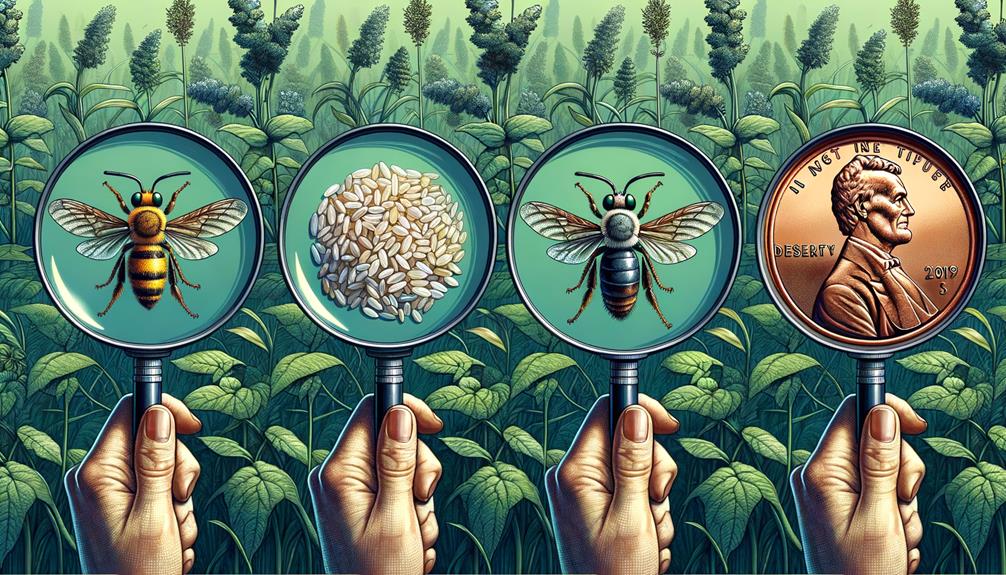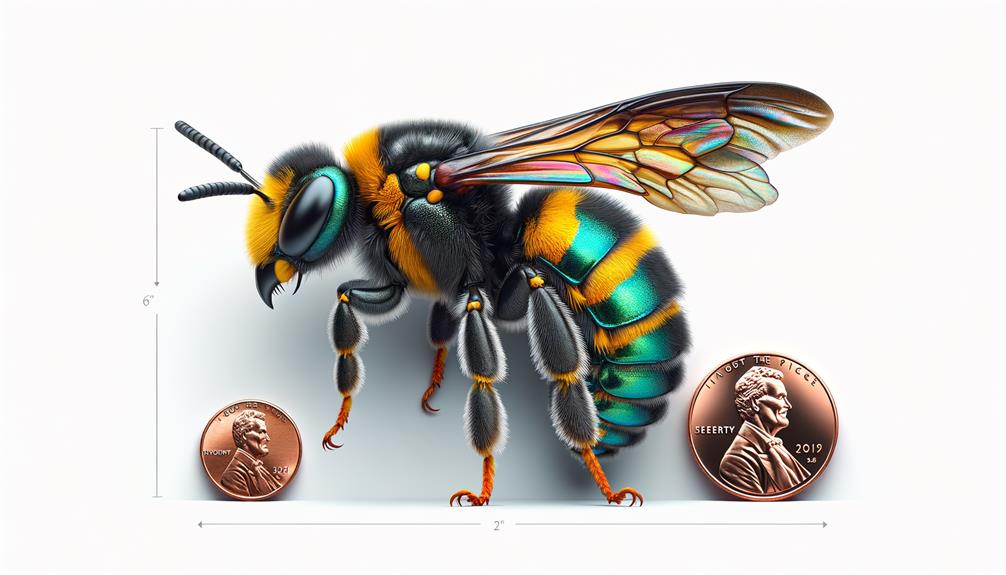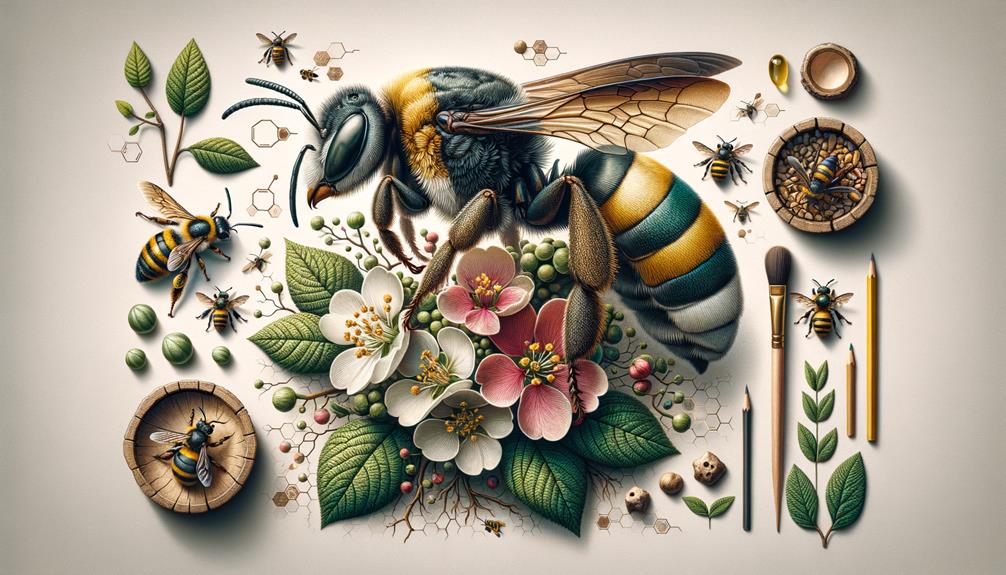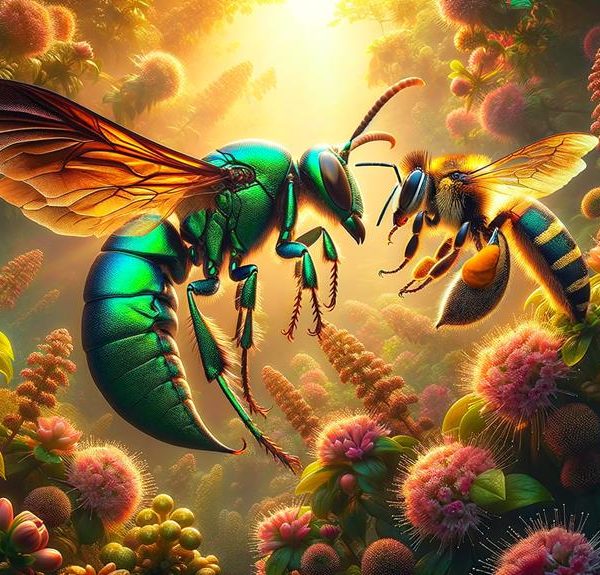Observe the fascinating world of cuckoo bees, as we delve into the factors that influence their size and how it affects their survival.

How Big Is a Cuckoo Bee
Bumbling bees buzz by, but have you ever pondered the size of a peculiar insect called the cuckoo bee? You might be taken aback to discover that these intriguing insects vary in size quite significantly, from minuscule to relatively massive.
However, you wonder, what factors contribute to their size? And does it influence their behavior or survival?
We'll explore these captivating questions in the following sections.
Understanding the Cuckoo Bee

Diving into the world of entomology, you'll find that the Cuckoo Bee is a fascinating insect with a lifestyle that deviates significantly from typical bee behavior. Unlike most bees, they don't build their own nests nor collect pollen for their young. Instead, they've adopted a parasitic lifestyle. Much like the cuckoo bird, which lays its eggs in other birds' nests, the Cuckoo Bee lays its eggs in the nests of other bees.
Now, let's delve deeper. When a Cuckoo Bee finds a suitable host, it stealthily enters the nest and deposits an egg. The unsuspecting host bee continues to provision the nest, unknowingly providing for the Cuckoo Bee's offspring. Once the Cuckoo Bee larva hatches, it consumes the host's pollen store and eventually the host larva itself, ensuring its own survival.
This peculiar lifestyle has led to some unique adaptations. For instance, Cuckoo Bees lack pollen-collecting structures, a clear indication of their parasitic nature. They're also often more robust and heavily armored than other bees, better equipped to withstand potential attacks from their hosts. As you can see, understanding the Cuckoo Bee requires a deep dive into its biology and behavior.
Cuckoo Bee Size Comparison

Adding to our understanding of the Cuckoo Bee, let's now turn our attention to its size and how it compares to other bees. You'll find that the size of the Cuckoo Bee is a fascinating study in the diversity of the bee world.
- Cuckoo Bees vs Honey Bees: Cuckoo Bees, generally, are smaller than the common Honey Bee. Most species average around 1 cm, while Honey Bees can reach up to 1.5 cm.
- Cuckoo Bees vs Bumble Bees: Bumble Bees often dwarf Cuckoo Bees, with some species reaching up to 2 cm. However, this isn't always the case, as smaller Bumble Bees can be comparable in size.
- Cuckoo Bees vs Sweat Bees: Sweat Bees, another common species, are generally smaller than Cuckoo Bees, with an average size of 0.5 cm.
- Cuckoo Bees vs Carpenter Bees: Carpenter Bees, renowned for their size, typically surpass the Cuckoo Bee. Large Carpenter Bees can reach up to 2.5 cm.
Factors Influencing Cuckoo Bee Size

Just as with any creature, a variety of factors play a role in determining the size of a Cuckoo Bee, from genetic makeup to environmental influences. Let's delve into these aspects, shall we?
Firstly, the genetic makeup largely dictates the size of any bee. Different bee species have different sets of genes, and these genes carry the information that determines the size of the bee. Therefore, if a Cuckoo Bee has genes that code for a larger size, it'll naturally be larger than those with genes coding for a smaller size.
Secondly, the environment in which the Cuckoo Bee grows up can also impact its size. For instance, bees that grow in nutrient-rich environments tend to be larger than those in nutrient-poor environments. This is because a richer environment provides more food, allowing the bee to grow larger.
Lastly, the Cuckoo Bee's health can also affect its size. Bees that are healthy and free from disease are generally larger than those that are not. This is because good health promotes growth, while disease can stunt it. Thus, a healthy Cuckoo Bee is typically a larger Cuckoo Bee.
Size Variation in Cuckoo Bee Species

Now that we've explored how genetics, environment, and health can influence the size of a Cuckoo Bee, let's move on to examine how size can vary across different species of Cuckoo Bees. Not unlike other insects, Cuckoo Bees don't boast a uniform size. In fact, their size can fluctuate remarkably depending on the species.
Here's a snapshot of the size variation in some Cuckoo Bee species:
- Nomada ruficornis: These are among the smaller species, averaging around 8 to 11 mm in length. They're often mistaken for wasps due to their slender bodies.
- Epeolus variegatus: This species ranges from 8 to 12 mm, and they're recognized for their broad bodies and distinctive color patterns.
- Triepeolus lunatus: Standing at 11 to 15 mm, these bees are relatively larger and are known for their vibrant blue and black hues.
- Xeromelecta californica: The largest of the lot, these species can reach up to 16 mm, with females typically larger than males.
Impact of Size on Cuckoo Bee Behavior

Understanding the influence of size on Cuckoo Bee behavior can provide fascinating insights into their survival strategies and interactions within their ecosystem. You might think a bee's size doesn't affect its behavior much, but in cuckoo bees, it's a different story. Larger cuckoo bees tend to be more aggressive and dominant, often displacing smaller bees from their nests. They're also more likely to take over nests of larger host bee species.
Size affects their foraging behavior too. Bigger bees can carry more nectar and pollen, making their foraging trips more efficient. However, their larger size also makes them more conspicuous to predators, which can limit their foraging time and range.
The cuckoo bee's size also influences its reproductive behavior. Larger females can lay more eggs and have a greater chance of successfully parasitizing host nests. They're also more likely to defend their stolen nests against intruders.
Size can even affect a cuckoo bee's lifespan. Larger bees often have longer lifespans, possibly due to their greater energy reserves. So, as you can see, size plays a significant role in shaping the behavior and life history of cuckoo bees. Understanding this can help us protect and manage these interesting creatures.
Conclusion
In conclusion, you've learned that a cuckoo bee's size varies significantly, ranging from 0.3 to 1.5 inches, influenced by factors like species and environment.
This size variance impacts their behavior, notably their parasitic lifestyle.
Knowing the size of these intriguing insects helps us understand their unique role in our ecosystem.
So, next time you spot a bee, take a closer look, it might just be a fascinating cuckoo bee!


